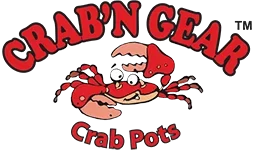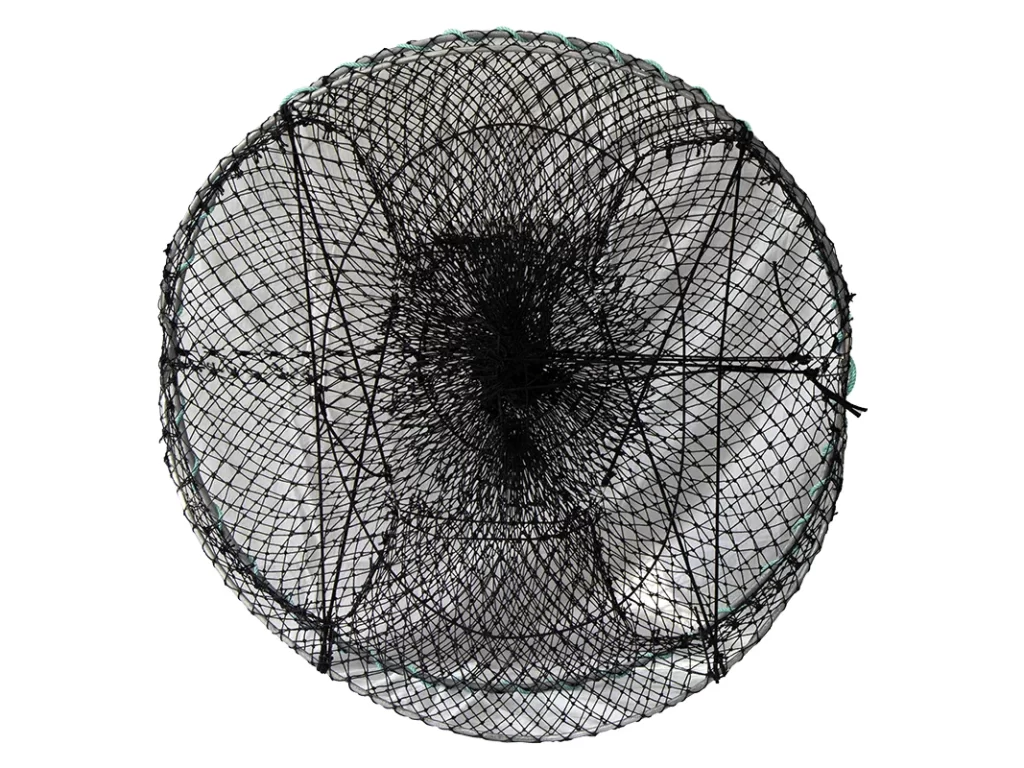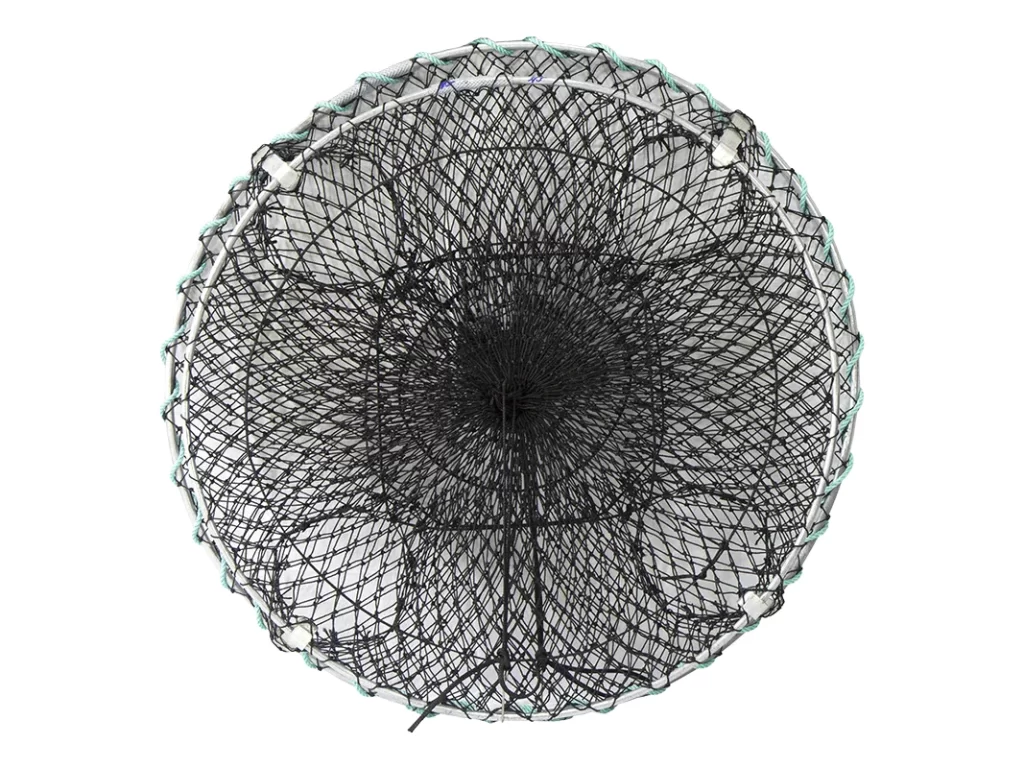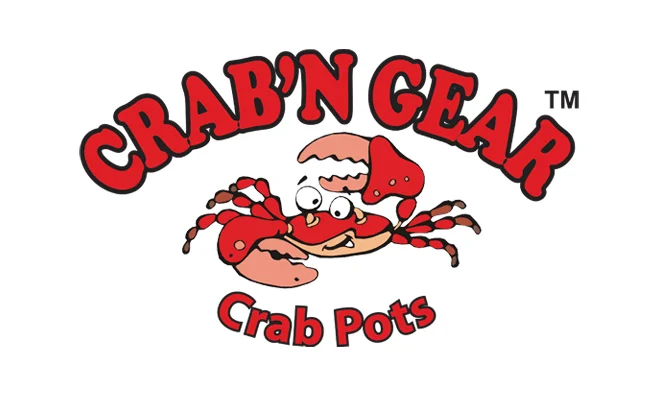Which Pot 4 Me
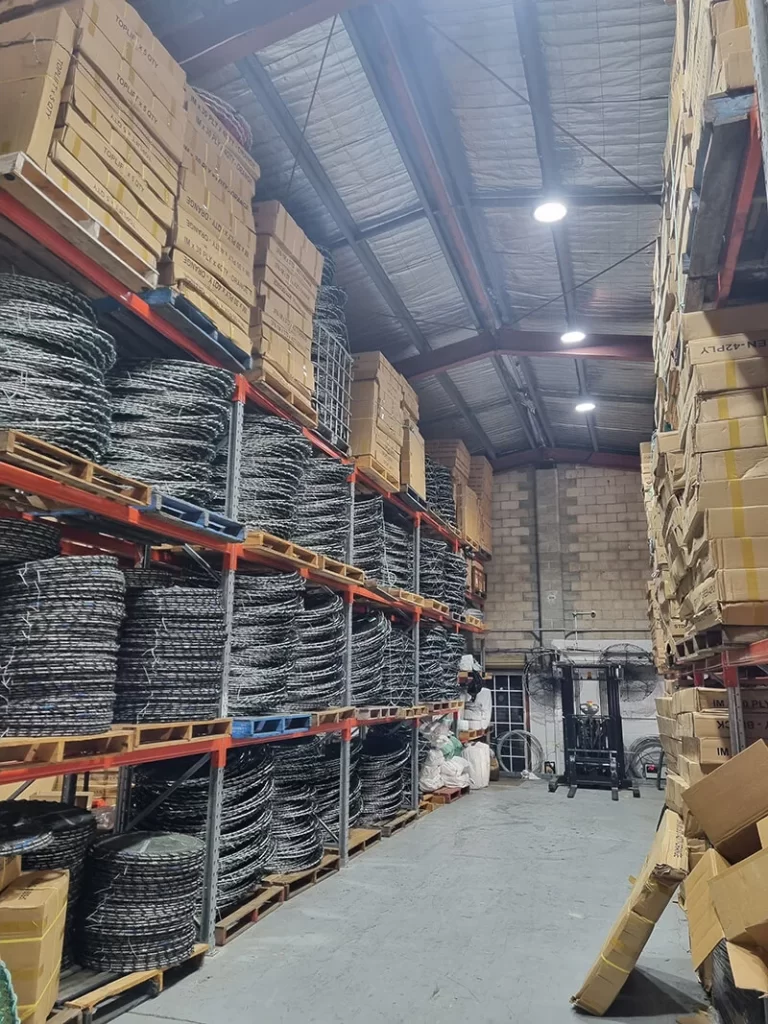
Which Pot 4 Me
Which pot should I buy is one of the most common questions we are asked. The answer is that no one single pot will suit every crabber and fishery, so we have a few for you to choose from! If you want to get the ‘perfect’ pot you will just need to ask a pro crabber to describe it for you, the challenge is that if you ask 10, you will have 10 different ‘perfect’ pots.
To help you find your perfect pot here are just a few thing you should consider
Catch & Hold
The most important thing to think about when looking at a crab pot is will it Catch AND Hold crabs. Most crab pots will catch crabs, but not all will hold them effectively. Once a crab has filled their belly on the bait that got them in there in the first place, they will then spend a fair bit of time trying to find a way out! If your funnels are loose or too low, the mesh is weak or worn or the top entrance isn’t closed up securely then they will find a way out and you’ll miss out on a feed.
Pot Size
When we talk about pot size, this relates to the diameter, in mm, of the pot ring. We have 5 pot sizes ranging from 600 to 1300mm so this is a great place to start. Bigger pots take up more room, are heavier and more cumbersome. Smaller pots are more versatile, easier to carry and can fit into smaller spaces in and out of the water. You need to think about where you are going to use your pot. If you’re using a kayak or smaller tinny you may consider the 600 or 800 pots. However, if your boat is larger then 800, 900, 1000 or maybe even 1300 pots might be more suitable. Think about the space on your boat’s floor and then think about what will be comfortable for you, especially if you’re going to have other people on the boat as that usually equates to more pots! If you’re walking your pots in then you really need to think about this too!
Pot Rings
One of the biggest challenges in crabbing is finding your crab pot where you left it. Many people think their crab pot has ‘been stolen’ where in fact often no one has touched it, it has just moved up or down the river or estuary 200m, 500m or even more. These pots become ghost pots and are a menace to the environment, catching and killing all kinds of marine life (as well as catching props etc). The primary cause of this is lightweight crab pot rings. To address this, Crab’n Gear uses a combination of 10 and 12mm rings. As the pot gets larger it is important that the size of the metal in the ring also increases. The heavier rings hold the pot to the floor of the waterway and reduce the chance of it moving or rolling in the tide or current. Check out our Crab’n Tips page for more ideas on how to keep your pot where you left it.
All of Crab’n Gears pot rings are hot dip galvanised so they won’t easily rust! Many of the cheaper pots aren’t hot dipped so they will only last a season or two before they become brittle, bend, and break!
Mesh
What mesh to choose can be quite confusing and many well seasoned professional crabbers struggle with what mesh to choose!
Firstly let’s look at mesh ‘thickness’. The thicker it is, generally, the longer it lasts, but it is also more expensive so it is a balancing act between price and longevity. You will see a ‘ply’ rating for the mesh used in most decent quality pots. Ply refers to how many individual strands, or denier, the ‘rope’ that they use to make the mesh has. So 30 ply has 30 stands and 42 ply has 42 strands. The challenge is that each denier can also have a different thickness. So you could have a 30 ply mesh that is actually thicker than a 42 ply mesh as the 30 ply strand is 50% thicker than that used in the 42 ply! In the table below you can see the Denier and Ply for each of Crab’n Gear’s mesh types to take the guess work out of it. One good thing is that your eyes and hands can help you to be a fairly good judge of this! Look at the mesh, roll it between your fingers, see how supple or stiff it is and imagine how it will stand up to a crab who will be pretty keen to get out of your pot!
Note: A denier is a weight in grams for a 9,000 metre length of twine. So if someone says something is “210 dens”, they mean that this 9,000 metre length of twine weighs 210 grams
The second thing to consider is mesh colour. Crab’n Gear mesh colours have been chosen strategically to provide the greatest opportunity to catch crab, while knowing that there are other benefits that can influence the decision. When mud crabbing it is reasonable to believe that mud crabs, that usually live in water that is murky, like to blend into their environment to reduce being preyed upon. They don’t move great distances so trying to minimise the disruption when placing a pot is beneficial. As a result the mesh colours that most mud crabbers use are dark. Crab’n Gear’s standard mesh colours for mud crabbing are Black 3, Dark Green and Black with a Green Spec. These pots blend into the environment and could easily be mistaken for something like a rock, tree stump or weed bed by the crab. Conversely, sand or blue swimmer crabs are known to swim great distances and often live in and around clear water in weed beds. Crab’n Gear’s Orange pots are the favourite for many sand crabbers as they prefer bright or lighter coloured pots so as the crabs swim around, the pots can easily be seen in the weed beds and attract their attention, luring them in. Another reason some crabbers prefer lighter colour mesh is that any holes or wear in the mesh can be seen more easily than in darker colours reducing inspection time and ease of repair.
The third thing to consider is how the mesh is made. Traditionally three strand rope has been used due to its simplicity, versatility, and strength however braided mesh is becoming increasingly popular as it has a smooth feel, round shape, and is incredibly strong. Below is a table showing the types of mesh used in Crab’n Gear pots.
| Colour | Denier | Ply | Type |
|---|---|---|---|
| Orange | 260D | 30 | 3 Strand |
| Black | 260D | 30 | 3 Strand |
| Dark Green | 280D | 42 | 3 Strand |
| Black With Green Spec | 380D | 2.5mm (40) | Braid |
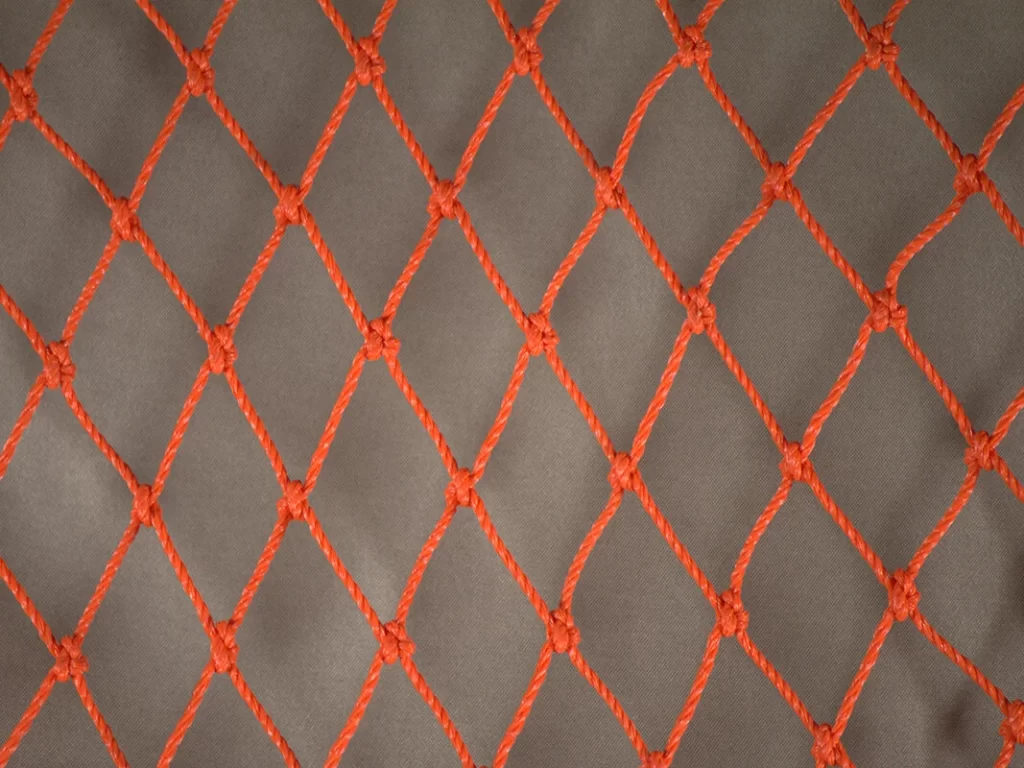
Orange 30 Ply Mesh
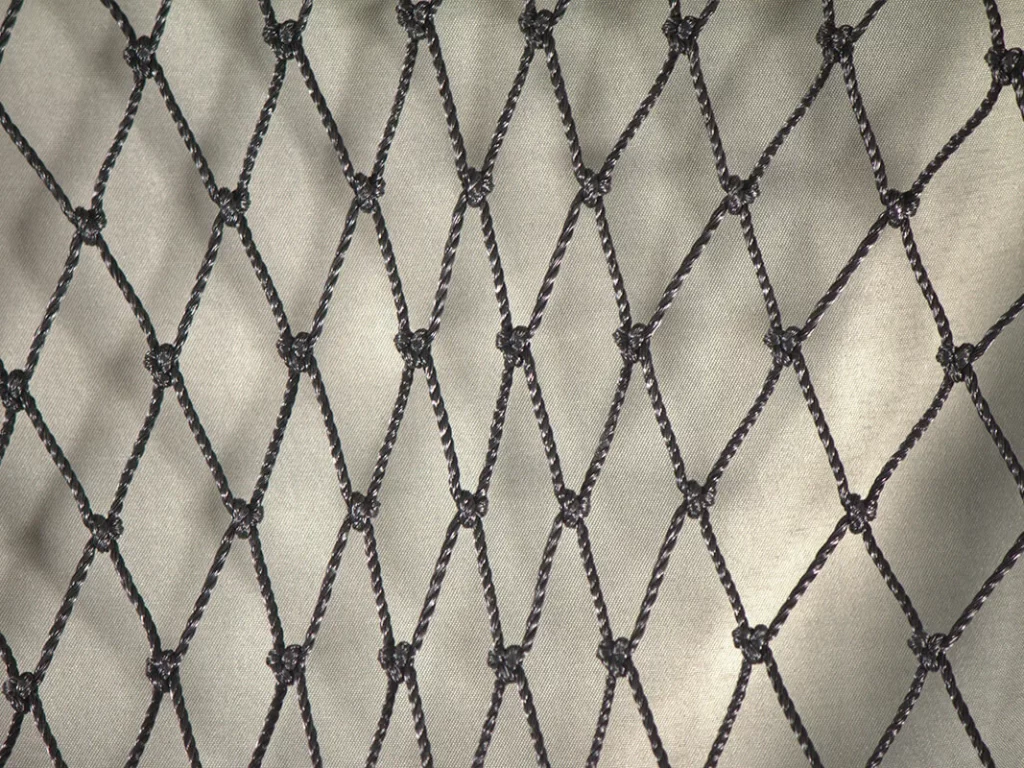
Black 30 Ply Mesh
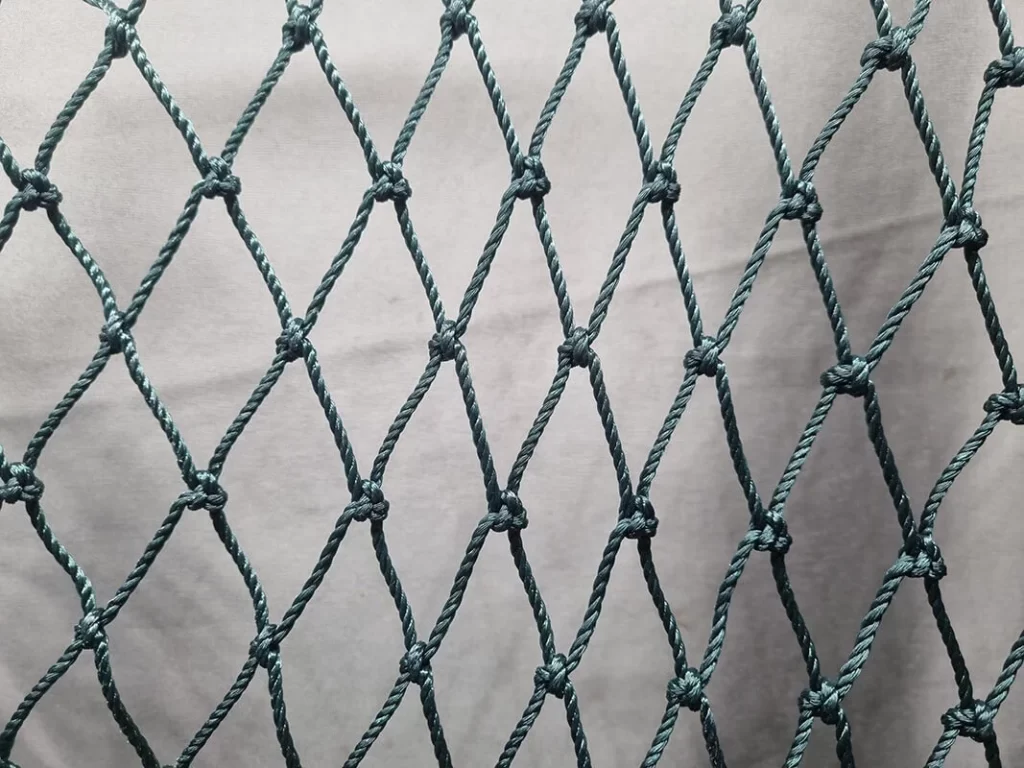
Green 42 Ply Mesh
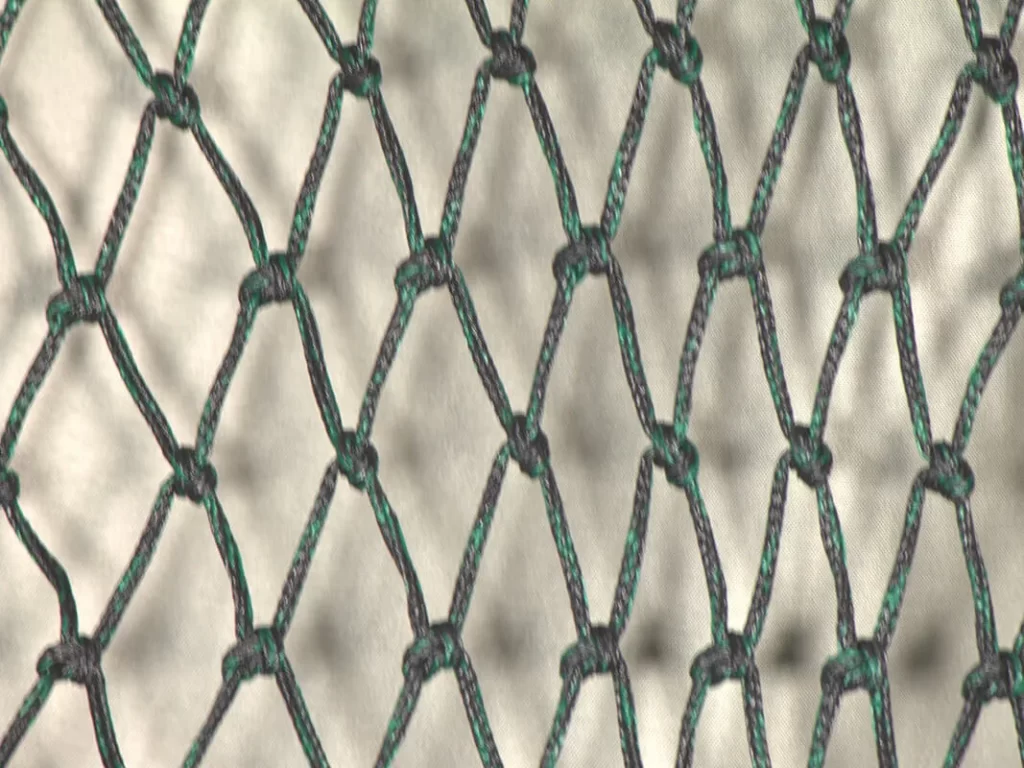
Black with Green Spec 2.5mm Braid
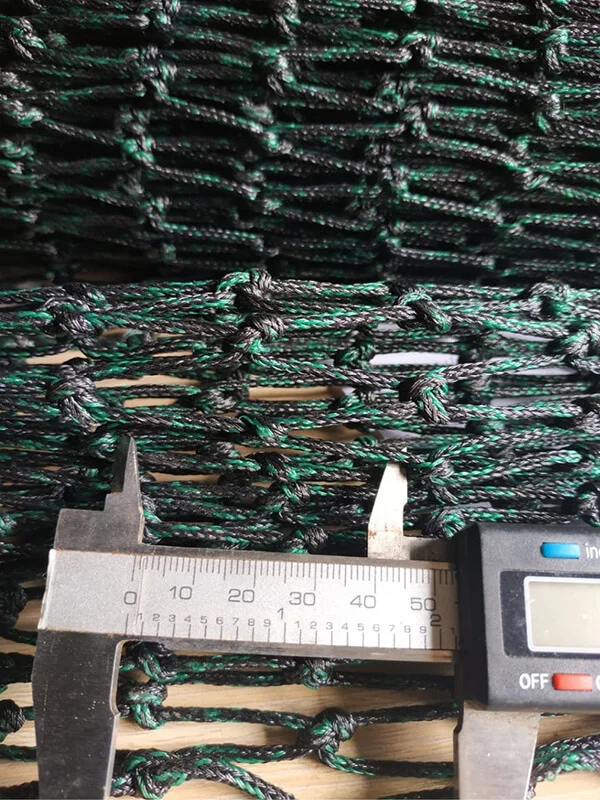
There are many ways to measure the Mesh Size but traditionally in Australia mesh is measured in a stretched condition from the first to the end knot at their center points known as center measurement and/or inside of the knots called inside measurement. All of Crab’n Gear’s mesh is 55mm which makes them legal in all states in Australia, depending on the relevant pot type.
The last thing to consider is the UV stability of the mesh in your pot. Crab’n Gear adds up to 30% more UV stabiliser than industry standard. It is pretty much impossible to check this on a new pot. However, we have some great testimonies from our pro crabbers where they have used their pots for 15 or more years!
Chafe Rope
Chafe rope is wound around the pot rings, weaving in and out of the mesh, and has the specific purpose of reducing the ‘chafe’ or wear on the pot mesh where it meets the ring. Whether it be on rocks, on the bottom of a waterway, the bottom of your boat, ute or wherever you store your pots you are better off having the chafe rope wear out than the mesh. This will significantly increase the working life of your pot.
Funnels
This is one question that there is no simple answer to! There are three things to consider, 1. How many funnels, 2. The funnel construction and 3. The height and tightness of the funnel entrance.
Which is better – 2, 3 or 4 funnels? The main thing to consider is the diameter of the pot in relation to the number of funnels. If you were to have 4 funnels on a 600 pot they would be very narrow and if you were to have 2 funnels on a 900 pot they can be made as wide, or narrow, as you want! At Crab’n Gear our 600 & 800 Pro Pots have 3 funnels and 900 to 1000 have either 3 or 4 funnels whereas our Pop Up Pots have 2 funnels. It is really a personal choice that is usually made through trial and error.
Funnel construction can vary significantly depending on things such as the depth and angle of the funnel, and how tight the mesh is pulled. All of these vary a bit between different funnel numbers and tweaks that can be made to the funnels that can be found in Crab’n Tips. Suffice to say, you want the funnels to be reasonably deep, but not so deep that the end of the funnel is right over the top of the bait bag (or another crab who’s having his lunch might not be to welcoming), the angle needs to be reasonable but not too steep and the mesh needs to be tight, but not so tight that the crabs won’t want to walk on it. But, be careful, if your funnels are too tight then you’ll also miss out on a feed as they can’t get in!
Lastly there are (generally) two pieces of rope that run around the inside of the pot that make a loop that holds the funnels tight or ‘open’. On Crab’n Gear pots you can untie the end of the funnel rope and tighten it (or loosen it) to your required level. A loose funnel will allow crabs to easily enter the pot, but also allow them to easily escape. A really tight funnel can stop some crabs from entering the pot, but once they are in there is a low likelihood they will escape! So finding that magical middle point is what you’re looking for! However, once you’ve found it, especially in new pots, you will still need to occasionally adjust it as the mesh stretches etc.
Poles (or Not)
There are a few things to consider when looking at the poles (or lack of) on a crab pot. Most importantly is how long they will last. There are a lot of pots where the legs are made from cheap white or grey plastic. They have very low UV and salt resistance, so they break and crack very easily. Crab’n Gear Pro Pots use 25mm UV stable Poly Plastic legs that are extruded straight for ease of use. One end is threaded onto the bottom ring so you can’t lose them, the other end has a notch cut out that ‘clips’ onto the top ring making them very stable and strong once set up. Our Top Lift Pots are aluminium and our patented Pop Up Pots are unique as they don’t have any legs but instead use counter sprung bungee cord to make it easy to set up and pull the pots down.
The ’tightness’ of the pot is in many ways determined by the pot legs. If they are too easy to put up, the pot mesh and funnels are usually too loose, and crabs may be able to escape from them. If they are too tight, then the funnels will be too tight making it hard for the crabs to enter the pot. We try to make them ‘just right’ but if they are still too hard to put up, you can use one of our Pot Spreaders! These easy to use devices make light work of the set up phase, especially when there are kids on board the boat.
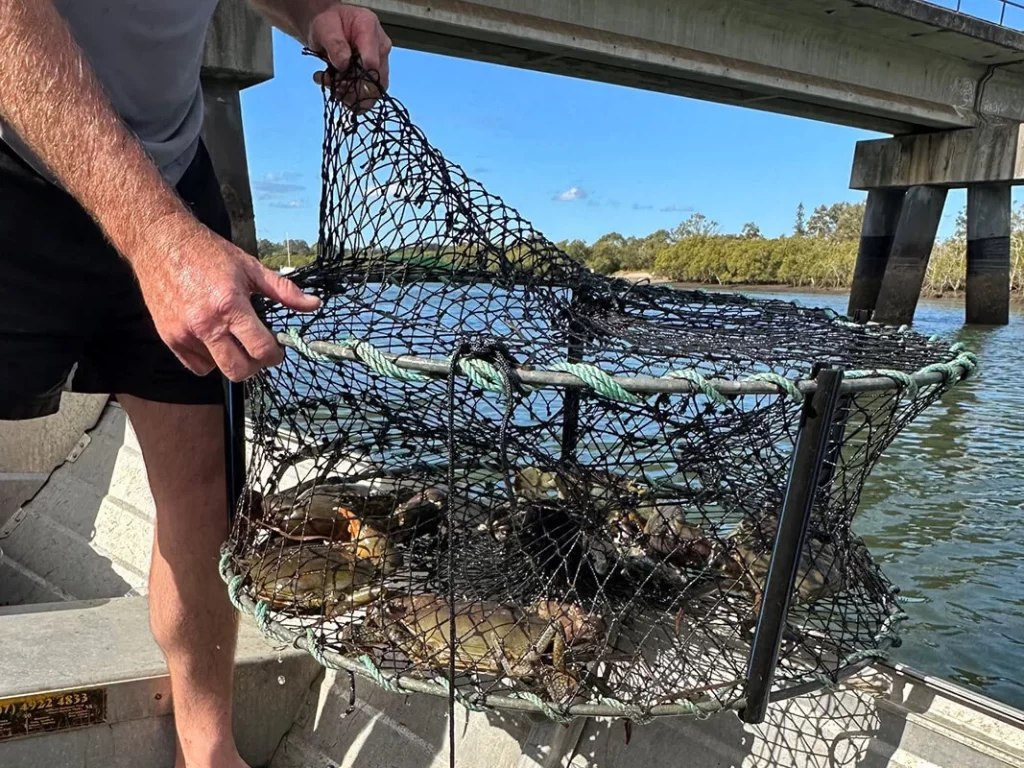
Poly Pot Legs
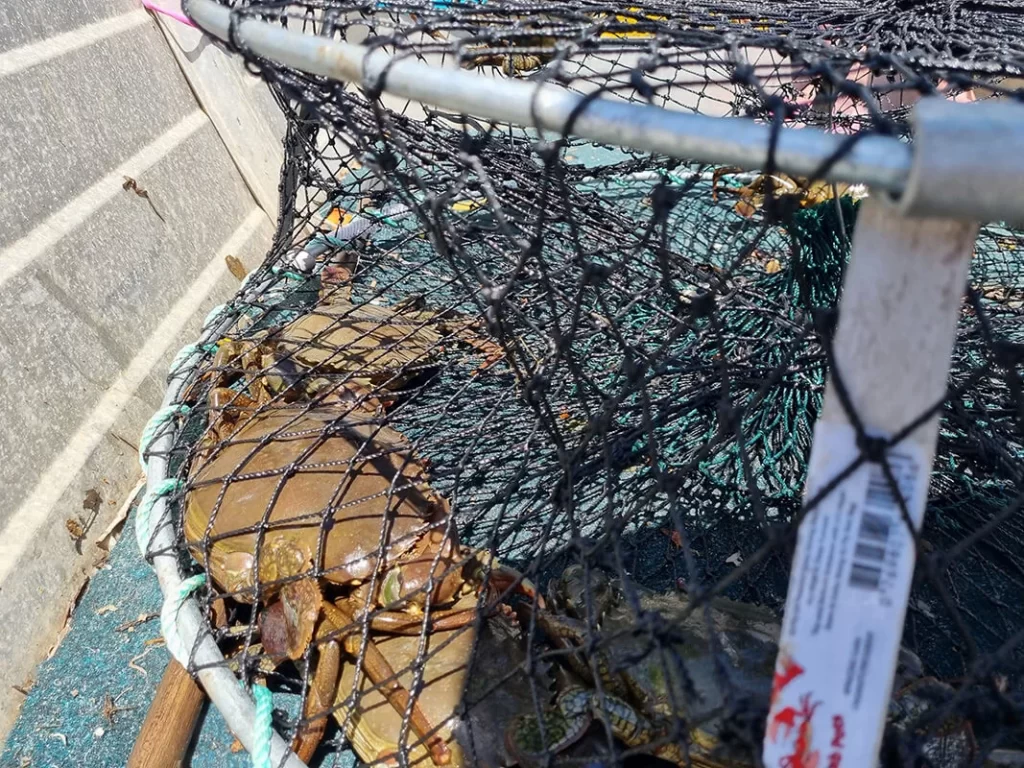
Top Lift Aluminium Legs
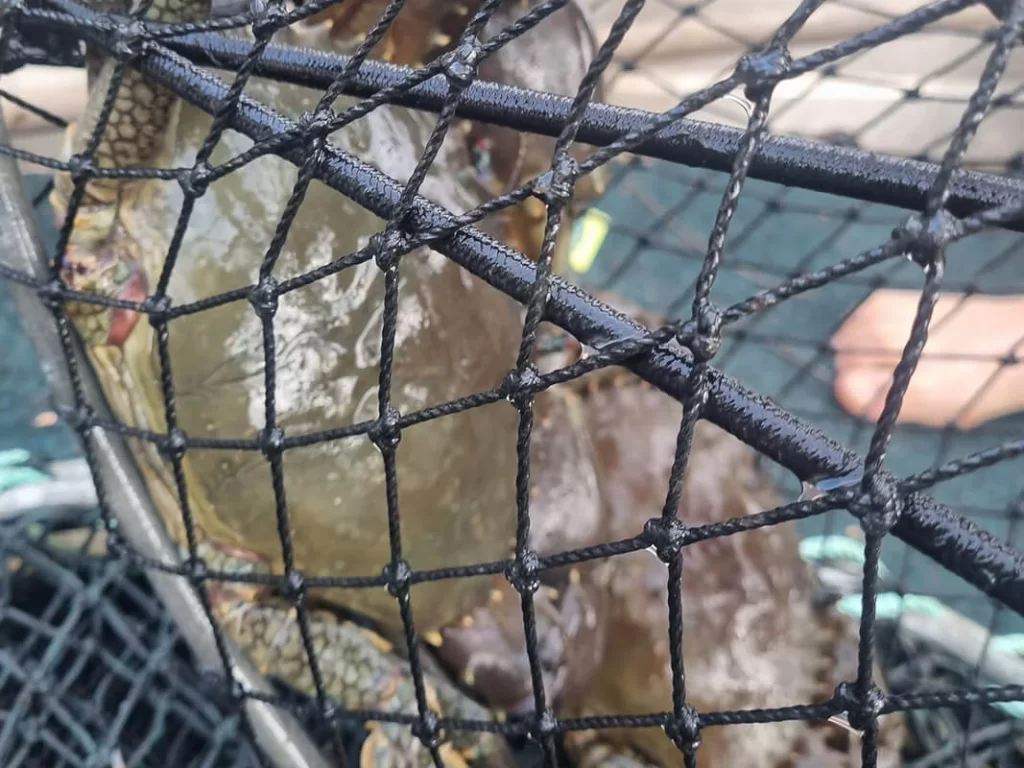
Pop Up Pot’s Bungee Cord
Bait Bag
The sewn in bait bag is a great invention in the modern crab pot. While it isn’t essential it sure makes life easy! Using the bottom entrance, you can easily put in or remove your bait hassle free. The ideal bait bag isn’t flush on the bottom of the pot but should extend up into the pot itself, importantly allowing the water to wash through the bait, casting the scent out for the crabs to follow. It also needs to be big enough to hold your favourite bait and strong enough to withstand the rigours of the crabs. Pot size does limit the sewing in of a bait bag as in our 600 range but there are other options such as Bait Ezy’s, bait clips or bait bags that can be used.
Top Entrance
All pots have a top entrance of sorts where you can get the crabs out. The easiest way is to have a hook on the end of a piece of rope that hooks onto the ring on the opposite side to where the rope comes out of the mesh, securely closing the pot up. An often unknown and important part of the top of the pot is the tensioning rope that has two uses. Firstly, it works as a funnel if you are tipping your crabs out, but the most important feature is it holds the tension through the whole pot. As pots get older the mesh can stretch and the pot becomes loose and ineffective. By cinching the rope up, the whole pot becomes tighter and will catch and hold crabs better.
Longevity
Finally you can put the sum together of all of these parts and call it Longevity. Crab’n Gear’s pots and the quality materials they are made from have stood the test of time. Many professional and recreational crabbers have been using Crab’n Gear for more than 20 years and are now on their 2nd or even 3rd generation of crabbers. Below is a Crab’n Gear Pot that was retired in 2022 after 15 consecutive seasons by a Pro Crabber. It was in the water for more than 200 days a year. Both of this now retired Pro’s sons continue to use Crab’n Gear.
